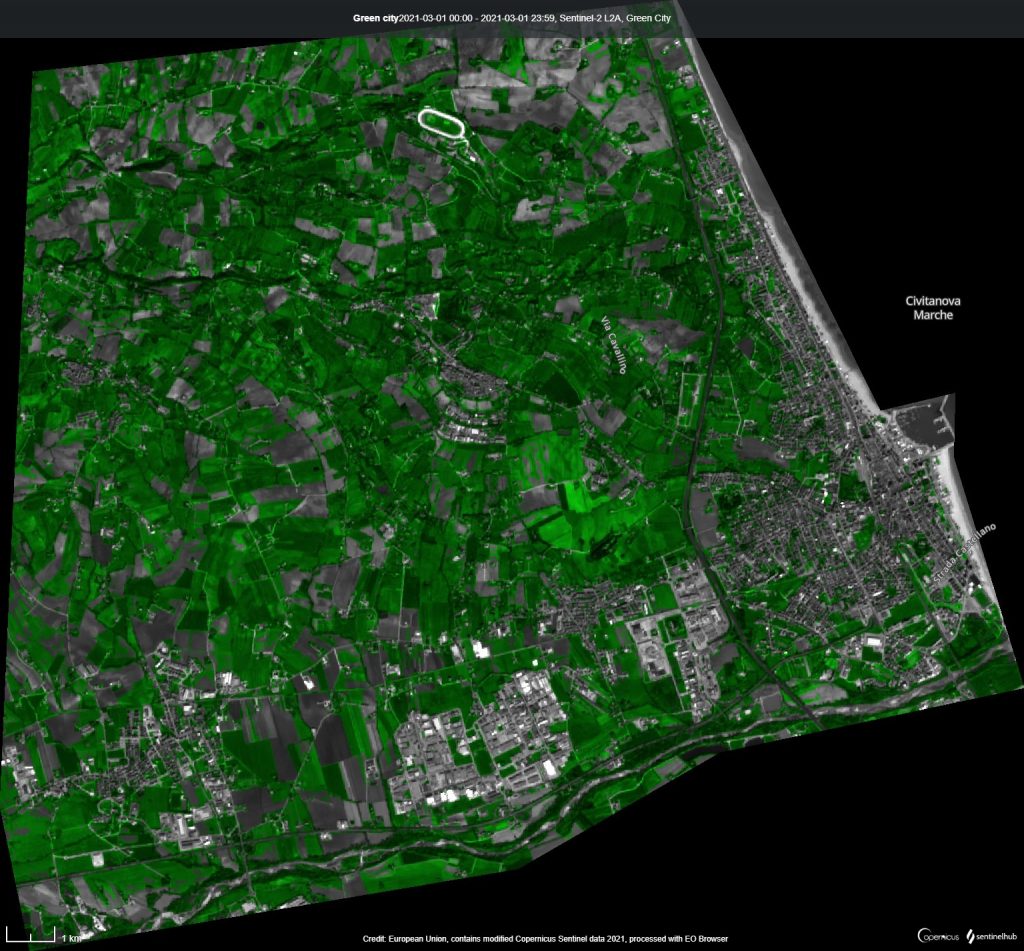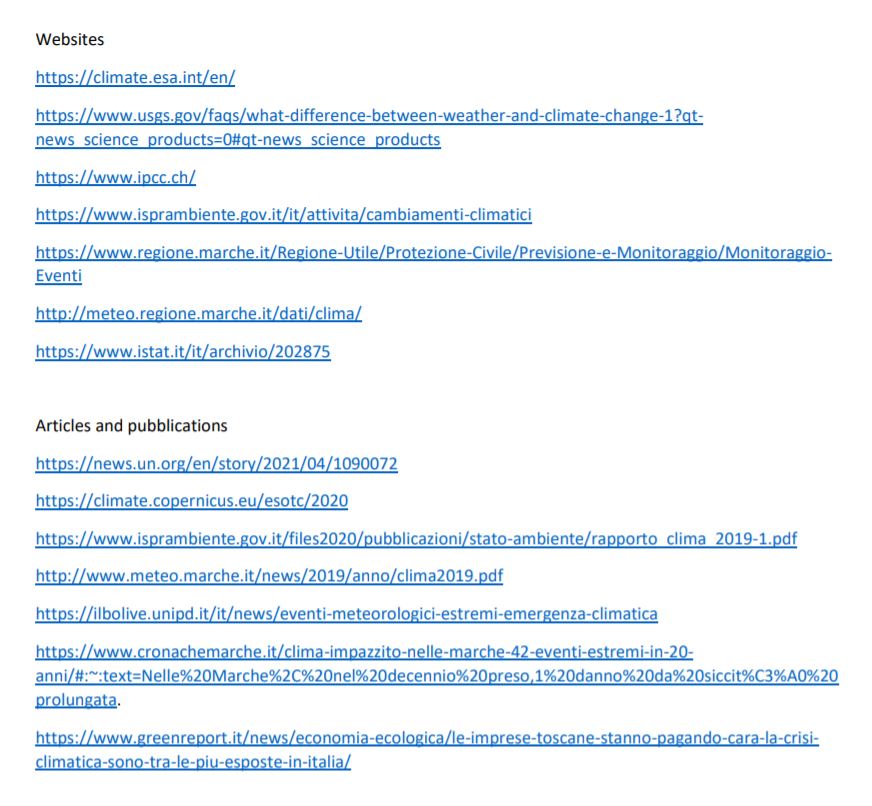Climate Detectives Projects 2020-2021
Topics
Project title: Climate data for climate action
Team: Da Vinci Climate Team Highly Commended Project
Istituto di Istruzione Superiore Leonardo Da Vinci Civitanova Marche Italy 31 9Student’s age: 14-15 years old
Is “climate change” measurable and quantifiable even in our region, the Marche, and in the city of our school, Civitanova Marche?

First of all we learned the difference between climate and weather, then we collected all the available climate data and sever extreme weather conditions regarding our region, Marche, and our city, Civitanova Marche for the period 1950-to present.
So, we studied the last regional (“ASSAM” website), national (“ISPRA” website) and international reports (“IPCC” website) on historical-archived meteorological data (e.g. rainfall, temperature, humidity, winds) and weather-related disasters.
In addition, from January 2017 our school has got a professional weather station, the only one that collects useful data for our city: although we have only a few data, we compared them with those collected by other weather stations in central Italy located on sites with similar environmental conditions of Civitanova Marche (fig.1).
The data show a specific trend: rainfall has steadily decreased and it is warmer than the past. We also registered severe thunderstorms, torrential rainfall, intense hailstorms, wind bursts, heatwaves, severe droughts and water shortages: this severe events hit parts of Marche especially in the last twenty years, causing damages to infrastructures, farming and ecosystems.
Finally, we analyzed satellite images of Civitanova district (from website earth.esa.int) that highlight urbanized area and flooding zone, in order to evaluate and propose to local Authorities simple measures to mitigate the climate-change related risks. We also promote to principal of our School best practices and new technologies that reduce climate pollutant emissions, in order to change our building in “zero emissions school”.

We have noticed that both for the Marche region and for our city the average annual temperature has increased (> 1°C) and the annual rainfall has decreased (10%) for the period 1950 to date.
With increasing global surface temperatures the possibility of more droughts and increased intensity of storms and torrential rainfall occur even in our area, as reported locally by several newspaper articles and regional reports (“Protezione Civile” website and related publications, see fig. 2) especially in the last decade: as more water vapor is evaporated into the atmosphere it becomes fuel for more powerful storms and hailstorms to develop; more heat in the atmosphere and warmer marine surface temperatures can lead to increased wind speeds in severe storm.
These severe meteorological events have steadily increased over the last twenty years, causing victims and damages in our region: from 2010 to 2020 there were 42 extreme events (23 floods, 12 damage from strong winds, 2 river floods, 1 severe landslide following heavy rains, 1 damage from prolonged drought);
in Civitanova Marche and its surroundings at least 2-3 extreme events are recorded per year, while in the period 1950-2000 these phenomena were much rarer and diluted over time.
We therefore need concrete solutions to mitigate this situation but, in the meantime, we must also adapt ourselves and our cities to the adverse conditions we are facing: in this work we suggest some actions to help lessen the problem.

To make a difference we started to act from now on – individually and in groups – with concrete actions to build a sustainable future and (try to) make a better world.
First of all we improve our knowledge on climate-related sciences: we think that studying a problem in depth means to be halfway to find almost one of the practicable solutions.
Then we are promoting best practices and new technologies that reduce climate pollutant emissions (greenhouse gases). Of course we start from our school, trying to change it into “zero emissions school” with a 3-years “eco-plan” that includes: the installation of at least 50 square meters of solar panels on the roof of the building; planting up to 100 trees to sequester CO2 (we have planted 30 native plant species in March, 2021); promote the use of bicycles to go to school (we’ll organize a public event in September, 2021).
Finally, we studied some “risk mitigation measures”: as can be seen from satellite images (Fig. 3), Civitanova Marche has urbanized areas at risk of flooding and a large amount of soil without vegetation cover. So, we propose to the Municipality of Civitanova Marche the reforestation of river banks, the creation of lakes and canals to dispose floods and/or irrigation of crops, the management of sewerage and a public information campaigns on climate change and the required adaptations to be implemented. Actions that could drive our city to mitigate locally the consequences of global climate change.
https://davinciviralscience.weebly.com/climate-detectives.html
Projects are created by the teams and they take the full responsibility of the shared data.
← All projects





